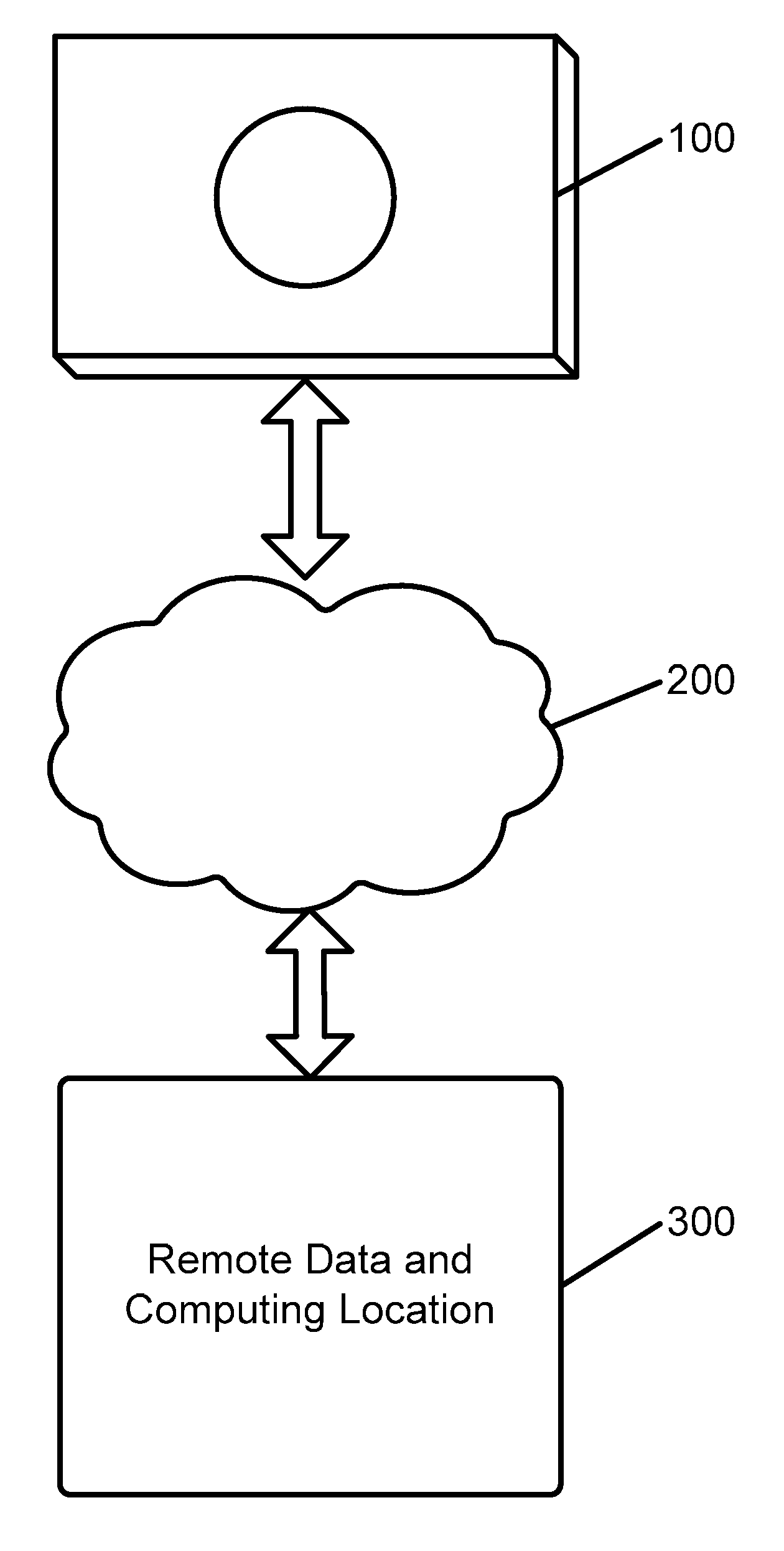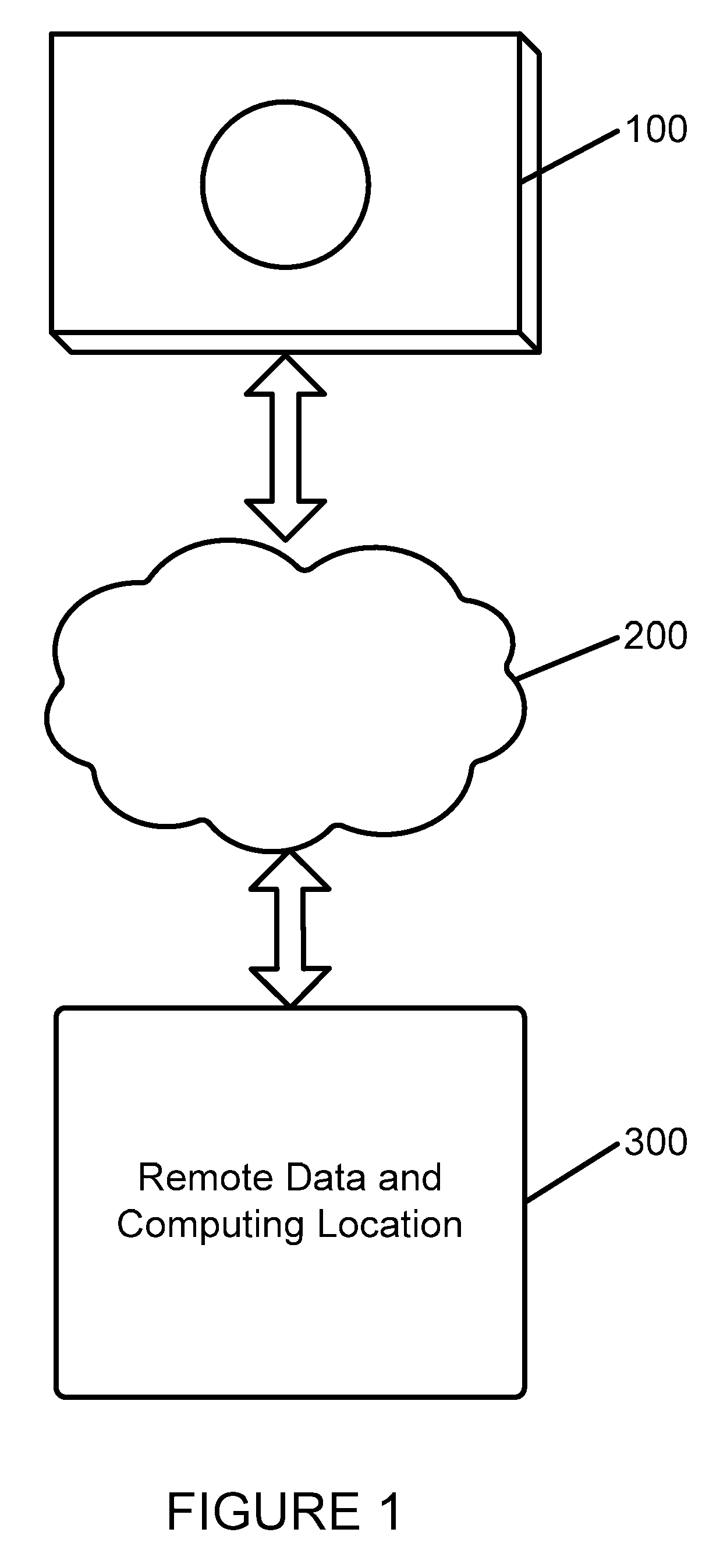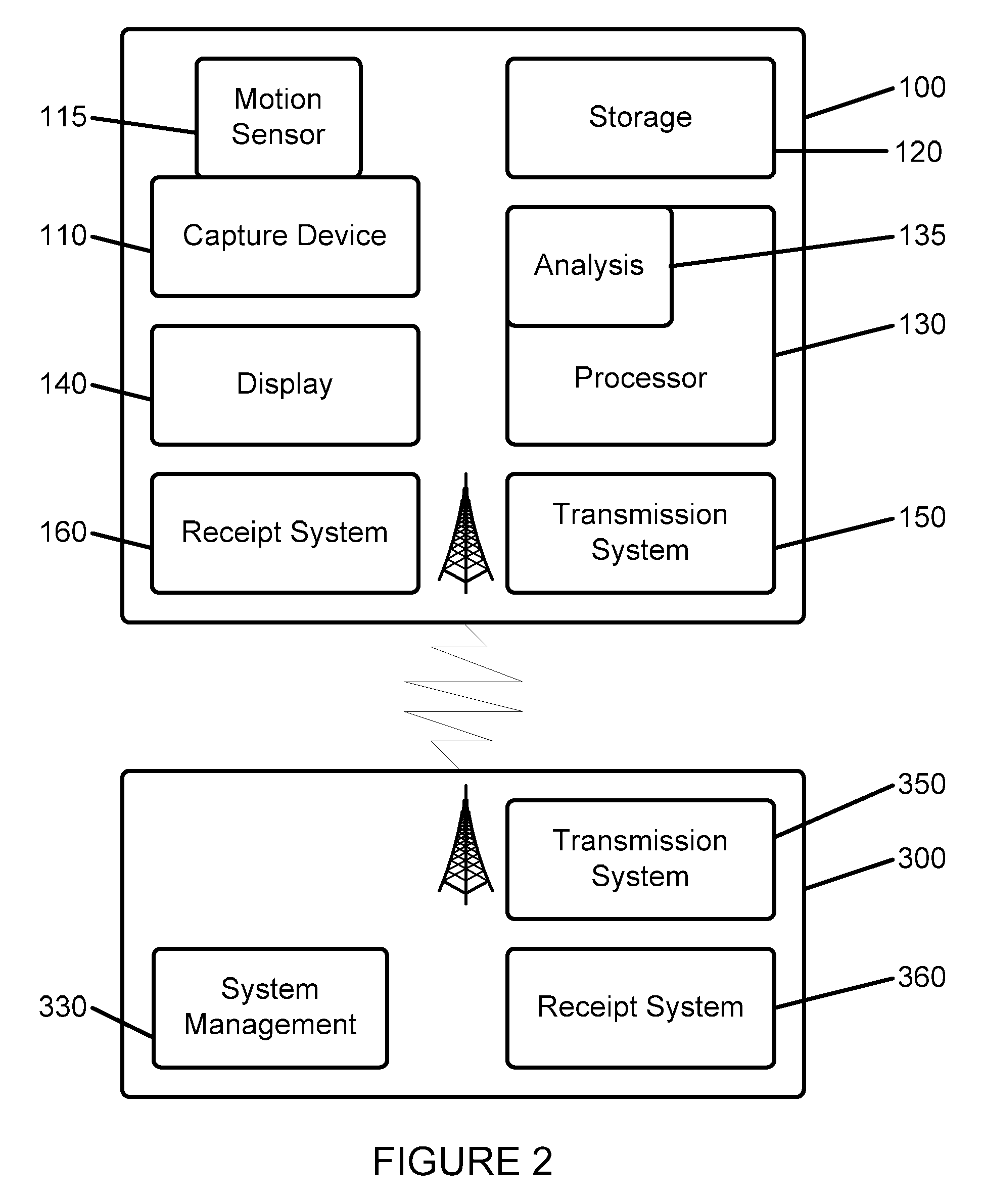Method and apparatus for collection of protocol adherence data
a protocol and data collection technology, applied in the field of patient compliance, can solve the problems of poor adherence, mixed interventions to improve adherence, poor ability of physicians to recognize nonadherence, etc., and achieve the effects of avoiding misunderstanding, facilitating information presentation, and minimizing forgetfulness
- Summary
- Abstract
- Description
- Claims
- Application Information
AI Technical Summary
Benefits of technology
Problems solved by technology
Method used
Image
Examples
Embodiment Construction
[0027]Referring first to FIG. 1, a remote information capture apparatus 100 is shown. Such apparatus is adapted to allow for the capture and processing of information in order to implement the system and method in accordance with the applications noted above and incorporated herein by reference. Such information capture apparatus 100 is placed in communication with a remote data and computing location 300 via a communication system 200, preferably the Internet or other communication system. Via communication system 200, information captured by apparatus 100 is transmitted to remote data and computing location 300, and analysis information or other instructions may be provided from remote data and computing location 300 to apparatus 100. It is further contemplated that a plurality such information capture apparatuses 100 may be coordinated to monitor a larger space than a space that can be covered by a single such apparatus. Thus, the apparatuses can be made aware of the presence of ...
PUM
 Login to View More
Login to View More Abstract
Description
Claims
Application Information
 Login to View More
Login to View More - R&D
- Intellectual Property
- Life Sciences
- Materials
- Tech Scout
- Unparalleled Data Quality
- Higher Quality Content
- 60% Fewer Hallucinations
Browse by: Latest US Patents, China's latest patents, Technical Efficacy Thesaurus, Application Domain, Technology Topic, Popular Technical Reports.
© 2025 PatSnap. All rights reserved.Legal|Privacy policy|Modern Slavery Act Transparency Statement|Sitemap|About US| Contact US: help@patsnap.com



